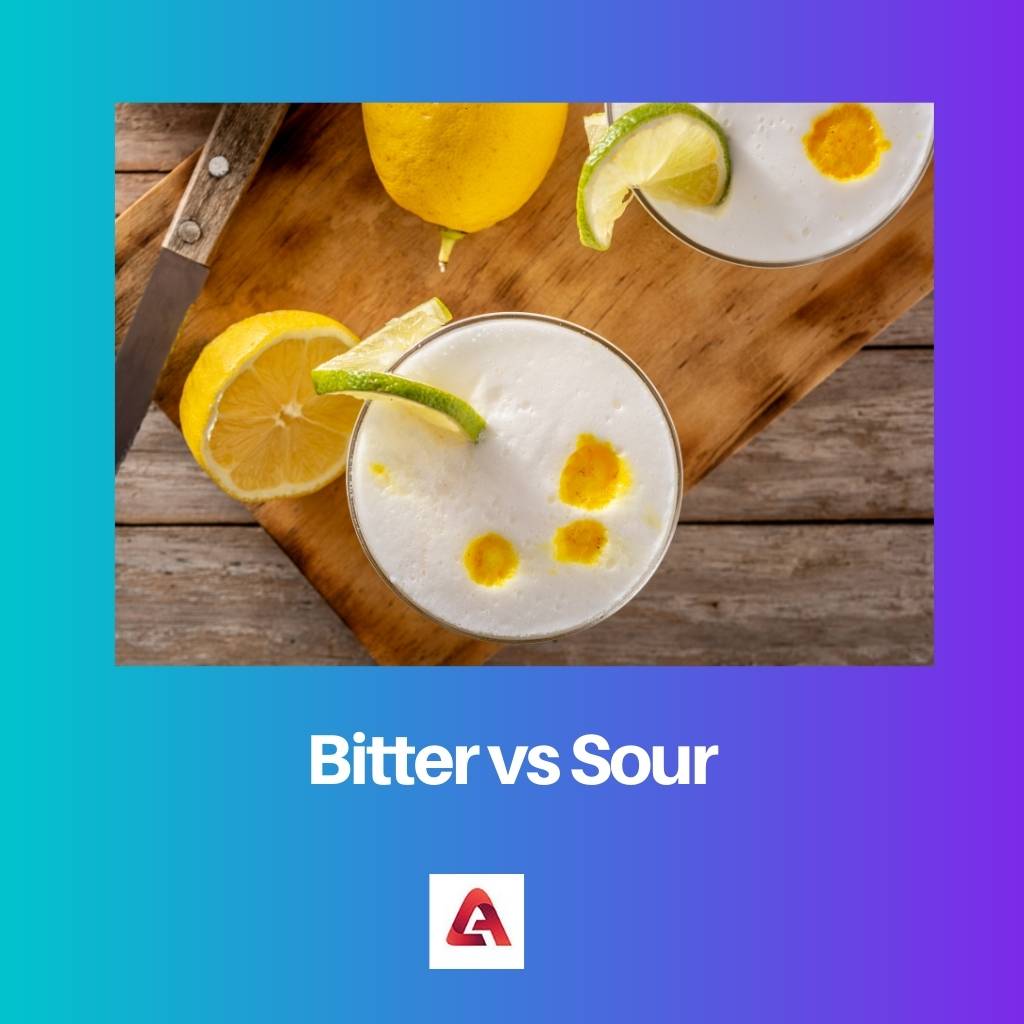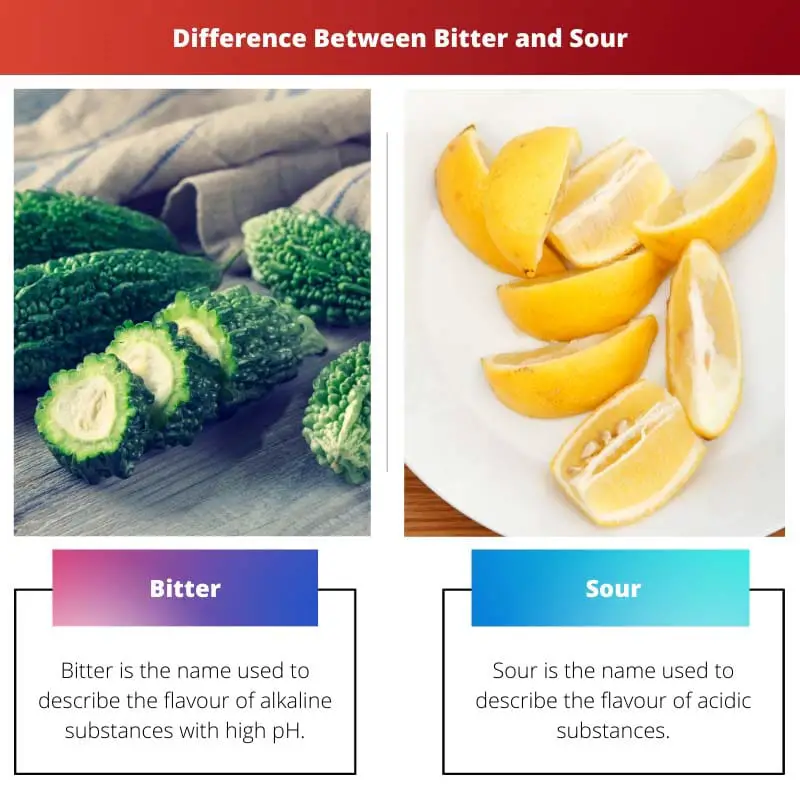The human tongue is capable of perceiving five basic tastes, namely sweet, bitter, sour, salty, and savory or umami. Each of these tastes can be detected by our taste buds utilizing specialized taste receptors for each.
Key Takeaways
- The bitter taste is described as unpleasant, sharp, disagreeable, and associated with natural toxins and poisons.
- On the other hand, sour taste is a pleasant but sharp and acidic taste associated with fruits like lemon and grapefruit.
- The bitter taste is sensed by taste buds at the back of the tongue, while the taste at the sides of the tongue senses the sour taste.
Bitter vs Sour
Bitter is an unpleasant, disagreeable taste and perhaps the most sensitive of all tastes. It is a sharp and pungent taste. Bitter refers to an alkaline pH (7 to 14). Sourness is an indicator of acidity. It is an acidic taste and refers to an acidic pH (0 to 7).

Bitter is the taste of any alkaline substance meaning any substance with a pH above 7 to 14. It is the strongest taste in humans and is perceived by all the taste buds on the tongue.
It is perceived by all the taste buds of the tongue and is perceived by a group of taste receptor cells (TRCs) that have ion channels to communicate messages to the gustatory nerve.
Comparison Table
| Parameters of Comparison | Bitter | Sour |
|---|---|---|
| Nature of Taste | Alkaline taste; sharp and pungent. | It is a milder acidic taste. |
| Sensitivity | It is the most sensitive taste for humans. | It is like the other regular tastes for humans. |
| pH Sensitivity | The taste of eatables between 7-14 is perceived as bitter by the brain. | The taste of eatables between 1-7 is considered sour by the brain. |
| Taste Receptor | Specialized G protein-coupled receptors in the taste bud called TAS2Rs or T2Rs. | Specialized taste receptors cells communicate through ion gated channels. |
| Likability | Bitter is considered an unpleasant taste to witness. | Sour is considered a more or less pleasant flavour in small amounts also treated as a delicacy |
| Detoxification of Body Cells | Bitter things are known to detoxify body cells like the liver, pancreas etc. | Sour foods do not have any such effect. |
| Stimulation of Appetite | Bitter things owing to their bad taste reduce the appetite of the consumer. | Sour things are known for being served as appetizers. |
| Examples | Bitter chocolate, coffee, bitter gourd, vegetable and fruit peels etc. | Lemons, citrus fruits or any food with known acids. |
What is Bitter?
Bitter is the name used to describe the flavor of alkaline substances with high pH. This flavor is detected by guanine nucleotide-binding protein receptors that activate by coupling a bitter molecule to its active site.
The brain is highly sensitive to bitter substances, probably due to an evolutionary adaptation, as most naturally occurring poisons and toxins are bitter in taste.
However, bitter foods have their own advantages. For example, butter foods activate our taste buds, and this helps us taste better.
Some bitter foods, are also known to have antibacterial and antimicrobial properties like neem and haldi. Bitter food reduces appetite and is paired with a diet for weight loss.
To compare the bitterness of a substance, we measure it in terms of how bitter it is in comparison to quinine, whose level of bitterness is considered as 1.

What is Sour?
Sour is the name used to describe the flavor of acidic substances. Any acid is a substance that has a pH lower than 7. All acids taste sour.
The cells detect sourness with the help of ion-gated channels in their membranes that respond to specific ions like metals or hydrogen in the case of sour food.
The brain responds accordingly. Sourness is a milder taste compared to bitterness and is almost always considered tasty. For example, lemon juice, pickles, sour candies, etc., are delicacies.
Some advantages of consuming sour foods are they help in increasing metabolism, this weight loss triggers salivation, help in ion absorption (malic acid), calcium intake ( lactic acid), etc.
Hydrochloric acid serves are the sourness index which means a comparison of the sourness of food is made with hydrochloric acid, whose measurement is considered as 1.

Main Differences Between Bitter and Sour
- The bitterness index is measured by quinine, while the sourness index is measured by hydrochloric acid. Each of those indexes is 1.
- Bitter foods help in detoxifying cells, while sour foods help in weight loss.




